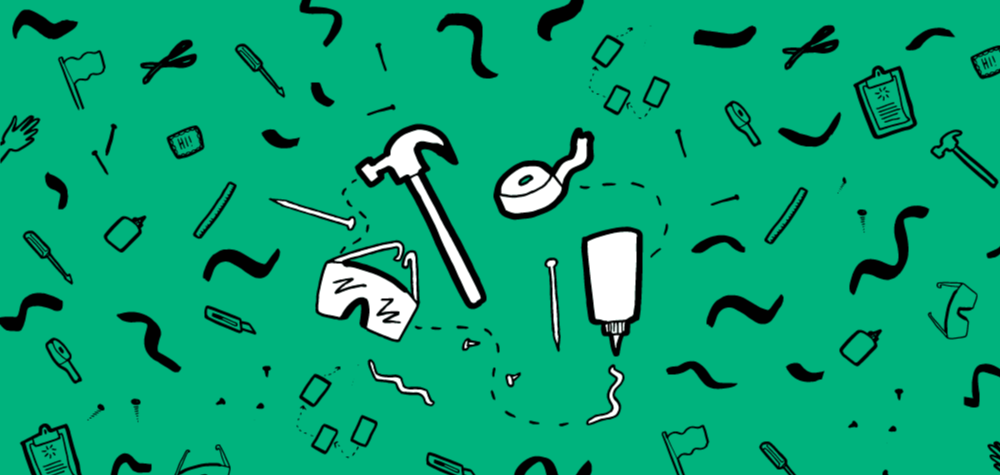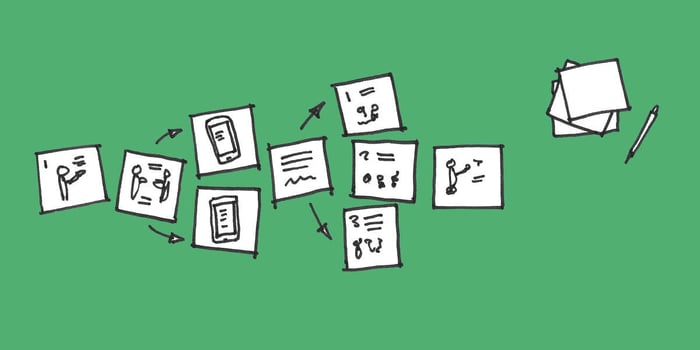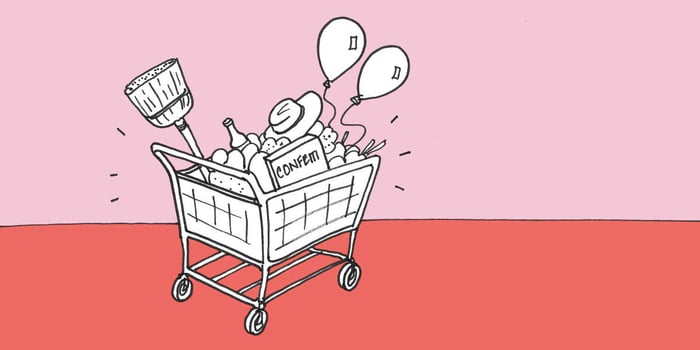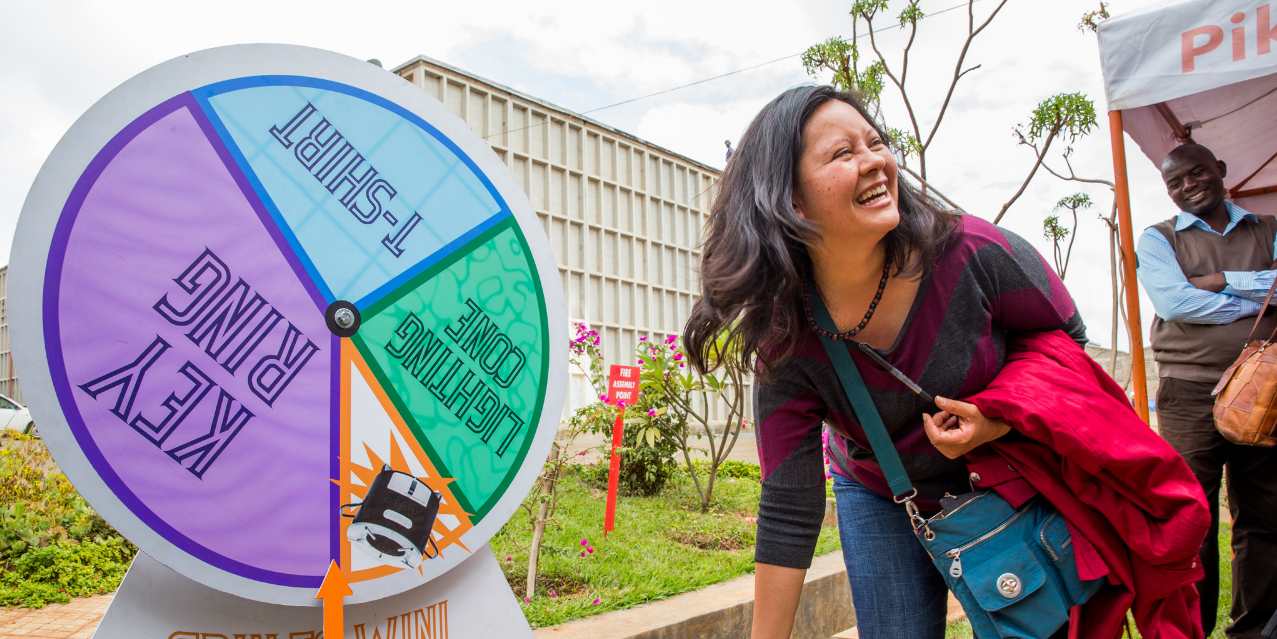Explore Guide Section
1.What is prototyping?
2.How to adopt a prototyping mindset
3.Common mistakes that first-time prototypers make
4.What are the different types of prototypes?
5.What are examples of prototyping for social impact?
6.What are the steps in prototyping?
7.Prototyping exercises to try
Leadership
3 Prototyping exercises to get unstuck
Design thinking exercises recommended by IDEO.org for prototyping to get unstuck and design more creative solutions to big challenges.
15 minutes
If you’ve taken Introduction to Human-Centered Design offered by IDEO.org and Acumen Academy, you know that getting out into the field and testing tangible things is key to developing original and potentially path-breaking solutions.
We gathered advice from designers at IDEO.org sharing their top design thinking prototyping exercises to help social innovators turn ideas into tangible offerings that can be tested.
But first, some background on what prototyping is and why it’s an important skillset for anyone who wants to be effective creating social change.
What is prototyping?
Nathalie Collins, a Senior Design Lead at IDEO.org explains what prototyping means:
“A prototype is an experiment that helps us answer questions about what we might eventually make. Sometimes a prototype can be a trial run of the end product, but a lot of times it consists of answering a critical question that we need to understand in order to evolve our idea.
“Prototyping at its core is a call to action to try something. It helps you create something in the world so that other people can react to it and it’s not just in your head. It’s a way to get to a solution faster, together.”
How to adopt a prototyping mindset
Joyce Kim and Adam Reineck, design at IDEO.org explain how one of the most common misconceptions about prototyping is that you do it after you’ve determined your product or service. But this assumption goes against the true value of prototyping itself!
Prototyping should be a core part of your entire project’s life cycle, allowing you to test opportunities earlier on and gain confidence that the project is headed in the right direction.
Joyce and Adam explain further:
“When prototyping, it’s easy to get stuck if you only focus on whether your prototype is successful or not. Instead, you want to ask more specific questions such as “What can we learn from this and what does it inspire us to do next?” By adopting this mindset, you focus more on learning than on failure or success, leading to new solutions you may have never thought of otherwise.”
Similarly, Acumen Academy Master Class instructor, Scott Sonenshein, calls this approach a ‘stretching mindset’, where prototyping enables you to use the fewest resources to gain insightful, immediate results instead of over-planning.
Nathalie Collins brings up another essential mindset for prototyping: never getting attached to a single solution. She expands:
“This is why we prototype a number of different concepts at once. If you put one idea in front of people, they say that they love it. But if you put multiple ideas forward, you get richer insights from the comparison.”
Read this article for more tips on how to Think like a Human Centered Designer.
Common mistakes that first-time prototypers make
According to Nathalie Collins, the most common mistake first time prototypers make is thinking too big by assuming that prototypes need to represent an accurate guess of what the final product or service will be. This jumps ahead to asking, “Is it working or not?” instead of taking the opportunity to ask specific questions that a prototype can help answer, which is: “What can we learn from this and what does it inspire us to do next?”
Nathalie goes on to explain:
“At IDEO.org, we talk about bringing something from a place of theory to a place of tangibility. Many people have a bias towards sitting in a room and thinking abstractly about a solution. Early in a design process, we use prototypes as a way to think. Often physically making something helps us think about it in a different way. It helps us answer questions we didn’t even know to ask. Later in the process, we use prototypes for validation. By putting stuff into the world, we get more feedback from the people who will ultimately be using our products and services.”
What are the different types of prototypes?
Low to high fidelity prototypes
Human-centered designers refer to prototypes as evolving from low to high fidelity. Another way to explain it is that prototypes are higher fidelity when they are more complex or refined.
Nathalie Collins explains how a project can move from low fidelity to high fidelity:
“Building a website is a great example for explaining the concept of fidelity. Often when we’re thinking about designing a digital interface, we start with just sketches. For example, we worked with a group of folks from Congo, Nigeria, and Kenya on how to match caregivers with children. We ultimately wanted to build a website with caregiver profiles. But the first prototype we developed was simply drawn on Post-its with markers. We were able to put our sketches in front of people and gain feedback within an hour. You can iterate on sketches that way. Then there are great prototyping tools for starting to make it interactive. For example, if you’re building an app, you can use Keynote or Invision to bring your sites to life before writing a line of code. When you get your prototype to a place that feels pretty solid, you can start to create full color layouts in Photoshop and then start to put that in HTML or Java. You want to learn what’s not working early so that you don’t waste time and energy later.”
Nathalie explains that a good indicator that your prototype is ready to transition into higher fidelity is when people start giving feedback on smaller details. “That means you can probably move to the next stage because you are reaching a point of refinement.”
Prototyping experiences versus prototyping products
At this stage, you might be wondering how to create a prototype for a service.
Nathalie points out that there are many similarities between prototyping products and services because even product prototyping requires testing experiential elements.
The main difference is that with products, you are likely to use more tangible inputs, like cardboard or found materials, and when you are prototyping experiences, the time frame is more critical. “You have to think about how you will get a group of people together, how you will facilitate, and how you will think through the content like a role play.”
One example of prototyping a service is when the IDEO.org design team was testing potential service delivery mechanisms for a clean water project in Kenya. They created a quick name and logo for signs and t-shirts, rented a kiosk and a storefront for a single day, and recruited some friends to help prototype three different types of in-person services to see what would be the most effective.
What are examples of prototyping for social impact?
Improving childcare in the slums of Nairobi
Nathalie recalls working with Kidogo, a social enterprise (and past Academy Academy students) to help determine how they might improve quality of care by onboarding informal caregivers with a ‘business-in-a-box’:
“One of the services we tried out was a lending library for toys and curriculum. We would drop off a box of toys related to “animals” or “families” to different caregivers and then swap the boxes a week later. We expected to learn details about how the childcare centers were using the toys, but it actually gave us a lot of insights into their business model. At one point, one of the women gave the box back because she was worried that she would have to pay for it! We realized it was more important that she stabilized her income first, rather than focusing on the toys. In the end we created a strategy with Kidogo around business services. We wouldn’t have landed on this strategy if we hadn’t first tried the toy prototype.”
Improving pediatric care in Nepal
Nathalie shares another example of an IDEO.org project in Nepal:
“We invited a group of women together to watch a video on how to look for warning signs in babies when something is wrong. To prototype interactive ways to get them involved in conversation, we created a Taboo-like game of cards with words and illustrations for things like fever or diarrhea. We wanted them to see how they could bring the conversation back home where they often live with their husband’s family and siblings. At the end of playing that game, we gave them their own set of cards to take home. But they told us they wouldn’t actually play them at home so we thought the prototype failed. However, we quickly began to see that mothers handed the cards to kids in the village. And the kids were actually the ones carrying the babies around! Pretty soon we had a scene of children ages 5-15 carrying babies and looking at cards really intently and reading what was on them. That was a huge aha moment. We realized these kids might actually be a better vehicle for bringing health conversations into homes. By the end, we had a little kid explaining how to diagnose jaundice. He could be a huge factor in helping to improve the life of his brother or sister.”
Addressing the Ebola outbreak in Sierra Leone
Computer engineer and Acumen Academy coursetaker, Usman Khaliq, shares his story about arriving in Sierra Leone around the time of the Ebola outbreak. Despite having used human-centered design methodology regulalary, Usman realized when running human-centered design focus groups and prototyping sessions in Sierra Leone that, no matter how many times he applies it, he always learns something new.
“When we wanted to run through how the app would connect people across West Africa to qualified doctors, we built cardboard prototypes first. Then we mocked up basic wireframes and tested them with close to 90 people. When you actually talk to people, a lot of preconceived notions get thrown out the window. Originally we thought that because so many people in Sierra Leone have feature phones and Whatsapp is so popular, they would want to use SMS to text their doctors. But we quickly realized that most people were not comfortable sending sensitive health information via text. Without prototyping and talking directly to end-users, we never would have learned this so quickly.”
Read how a team of Acumen Academy coursetakers learned the practice of prototyping in our course: Human-Centered Design 201: Prototyping.
What are the steps in prototyping?
There are four main steps to design prototypes to test your ideas (also outlined in more detail in this article about how to use design thinking to prototype).
Step #1 - determine what to prototype
You should start by validating the assumptions that need to hold true in order for your idea to work. According to Strategyzer, this means starting by testing hypotheses that have to do with the pain point that your potential customer faces. Once you are crystal clear on the problem your idea can solve, then you can move onto validating the solution itself. Once the problem and solution are validated, the final phase is to explore how you will deliver the solution and design the rest of the business model.
No matter which assumptions you’re testing with a prototype, the key is to stay focused and keep it simple. Design prototypes to test one assumption at a time. Each test will provide information to add to the big picture, and your prototypes will get more sophisticated over time to incorporate all the learning.
Step#2 - make it real
Leave your perfectionism at the door at the beginning! Your prototype doesn’t need to exactly replicate all elements of the experience. In fact, the simpler you design your prototypes, the faster you can get variations into the hands of your users for testing, and the faster you can iterate through versions and arrive at the ideal solution.
Step #3 - get feedback
Now it’s time to see how end users interact with the prototype. You can collect feedback through conversation, questions, and observation to inform the next iterations of your prototype. During the feedback phase, be sure to avoid inadvertently setting expectations for users to tell you what you want to hear. You want to ensure you receive open and honest feedback.
Step #4 - iterate & repeat
After each wave of iteration and feedback, take positive learning and integrate it into the next cycle of development. If user feedback indicates that you’re not quite on the right path, take the opportunity to go back to the drawing board and start prototyping in a different direction.
Prototyping exercises to try
Acumen Academy recruited two IDEO.org designers, Adam Reineck and Joyce Kim, to share their favorite three bite-sized prototyping exercises straight from IDEO.org’s Design Kit Travel Pack.
Adam Reineck is the Global Design Director at IDEO.org where leads design teams with an eye towards design excellence, making early and often, and finding new ways to experiment in the social sector.
Joyce Kim is the Digital Marketing Specialist at IDEO.org where she focuses on inspiring communities across the design and social sector through storytelling.
Joyce and Adam recommend these prototyping exercises to help learn what works--and what doesn’t--when designing solutions that will be embraced by the people you’re creating solutions for.
1. Make your question tangible

Materials needed:
- Table
- Two jars
- Tokens
- A poster
Purpose:
Is there a question that you’ve been struggling to answer related to your project? Use this method to get outside and get quick feedback in the real world. It could be something very simple and quirky, to something more serious about your world views. Passerbys just need to answer yes or no by putting tokens like a bean or pebble in a Yes or No jar.
Directions:
- Create a poster with your question
- Set up a table with the poster and jars for answering your question
- Encourage people to place their answers in the jar
- Bonus points for bringing your question to life with props, illustration, or role-playing. If you can make a stranger smile, there’s a much greater chance they’ll engage with you.
Based on our experience at IDEO.org, we’ve learned that it’s essential to never get attached to a single solution. This is why we often prototype a number of different concepts at once. If you put one idea in front of people, they say that they love it. But if you put multiple ideas forward, you get richer insights from the comparison. Try different questions on different days, or in different places to better understand nuance and mindsets.
2. Storyboard your customer’s experience

Materials Needed:
- Paper
- Pens
- Post-it notes
Purpose:
Make your ideas more tangible and considered by visualizing the steps in a person’s experience through a storyboard. By drawing out each step of your idea on a piece of paper you can iterate quickly at an early stage when you still have a lot of flexibility. This will help you refine the idea and identify questions about how it might work.
Directions:
- Choose an imaginary customer and write down their name, age, and short description. (Or better yet, identify someone you met during your inspiration research)
- Use post-its or half sheets of paper, map out each step in your customer’s experience one-by-one from their perspective. What are they seeing, doing, and feeling as they learn about and interact with your product or service?
- Consider how your customer first becomes aware of your solution, how they make a decision to try it, what their first experience is like, and how they might spread the word themselves. Visualize each step with quick sketches.
- Look carefully at the key moments of your customer’s journey and sketch out alternative options for each on an extra post-it. This allows you to quickly iterate on the fly.
- Now, act out the storyboard with your team to see how it feels. You’ll find holes in your plan just by experiencing it yourself.
3. Shop to get your hands dirty

Materials Needed:
- $20
- Timer
Purpose:
It’s easy to get stuck in a cycle of talking about our ideas, but design is all about action. Use this exercise to help your team move past theoretical concepts and start making things.
Directions:
- Assemble your team at a local retail store - the bigger the better! A hardware store, container store, or other big chain usually works best.
- Choose one of your ideas to work on. For example, “Today we’re going to prototype our idea of a pop-up health clinic for screening children under 5 years old.”
- Give everyone 15 minutes to explore the store and create their own scrappy set-up for your service or experience, using materials found in the store. Adding a budget for the total bill can unlock your creativity even more since it forces you to be more scrappy!
- One at a time, walk each other through the prototypes you’ve created, explaining how they would work and playing different roles.
The reason we love this exercise is that you will find yourself associating materials with your idea that aren’t intuitive or obvious and can lead to fresh concepts you might never find otherwise.
Considerations when prototyping for social impact
In the context of designing innovative solutions to tackle social and environmental issues, you might find yourself prototyping with people from low resource communities or while working in different cultural environments.
Nathalie shares her advice for how to prototype with social impact in mind:
“In those contexts, prototyping can be more helpful than interviewing because it breaks down the language barrier. If you create something you can see and interact with, it brings the designer and the user to a place of commonality much faster. For example, when we were in Nepal, we tried to figure out what brands mean to people. We created mood boards—a collection of colors, text and images or shapes. We then asked people to point to the brand images that felt more kind, trustworthy, or happy. These mood boards started a conversation we could never do in words alone.”
Conclusion
To wrap up, Joyce and Adam remind us that, “ultimately, prototyping is just another word for experiments that are designed to help us learn. Therefore, after you test any of your ideas, regardless of their level of resolution, it’s important to take time to reflect on what you learned - the good, the bad, and especially the unexpected!”
Discover more
Sign up to our newsletter
I have read and accept the Terms & Privacy


